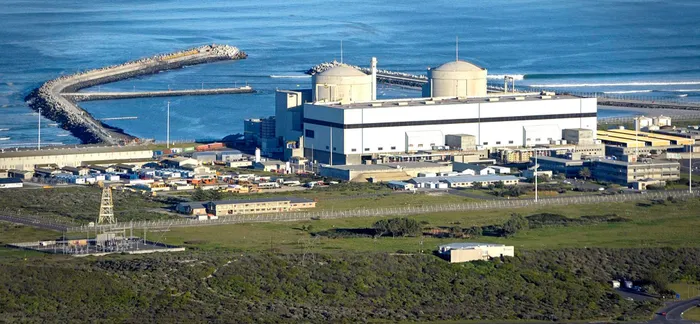Nuclear activists remain ambivalent of Eskom delaying Koeberg Unit 1 return
ENERGY

In July 2024, the National Nuclear Regulator granted Eskom a licence to continue operating Koeberg Nuclear Power Station Unit 1, joining approximately 120 reactors worldwide that have safely continued operations beyond their initial 40-year life.
Image: Supplied
Banele Ginidza
Eskom's announcement regarding the delay in the return to service of Koeberg Unit 1 has raised significant interest as the power utility confirmed the discovery of defects in the steam generator tubes.
This critical setback extends the unit’s downtime by a month, but Eskom is insisting that the necessary repairs have been meticulously completed to adhere to the highest safety and quality standards.
In a detailed update on Monday, Eskom disclosed that during scheduled eddy current inspections—a non-destructive testing method used to identify potential failures—defects were detected in four tubes out of several thousand inspected across two of Koeberg’s newly installed steam generators.
Eskom’s head of generation, Bheki Nxumalo, assured the public that specialised international teams have collaborated with local experts to address these issues immediately.
"Eskom immediately carried out an advanced automated process to address the four tube defects, supported by specialised international teams working alongside local experts," Nxumalo said in a statement.
Nuclear analyst Princess Mthombeni weighed in on the situation, highlighting that similar defects during life-extension work on reactors requiring tube plugging or replacements during extended outages had been observed in international contexts including France, the US, and South Korea.
"Steam generator tubes degrade over decades of operation under high temperature and pressure. Isolated wear or defects don’t signal systemic failure but rather the need for diligent maintenance, which is industry best practice," Mthombeni said.
"Eskom is following this path. While Eskom’s handling aligns with global norms, critics may argue this is yet another sign of Koeberg’s advancing age. That’s a fair concern, but objectively, many plants globally operate safely beyond 40 or even 60 years with appropriate inspections, replacements, and upgrades. Koeberg’s continued operation depends on these proactive interventions — not on ignoring the plant’s age."
In July 2024, the National Nuclear Regulator granted Eskom a licence to continue operating Koeberg Nuclear Power Station Unit 1, joining approximately 120 reactors worldwide that have safely continued operations beyond their initial 40-year life.
Koeberg Unit 1 provides 930MW to the grid and Eskom has invested in safety improvements and extensive maintenance to ensure that it continues to operate safely into the future.
Mthombeni said the involvement of international teams in repairing Koeberg Unit 1 was standard practice in the global nuclear industry due to the specialized nature of the work, adding that the repair costs were justified when considering the long-term benefits of stable, low-cost, carbon-free electricity that supports grid stability and complements renewables.
"Extending Koeberg’s life by 20 years is significantly cheaper than replacing its output with new generation infrastructure. This approach mirrors successful international examples (France, U.S., Canada), where life-extension projects, despite upfront costs, deliver strong economic value over time," he said.
"Therefore, the repair costs are proportionate and justified by the long-term, strategic value Koeberg offers South Africa’s energy security and emissions goals."
However, nuclear activist from the Koeberg Alert Alliance, Peter Becker, pointed out that the French Authority for Nuclear Safety and Radiation Protection (ASNR) has seen comparable defects in reactors of the same model as Koeberg.
Becker noted that, whereas the French authority mandated a precautionary shutdown to perform thorough inspections, South Africa’s nuclear regulator has accepted Eskom's assurances of safety and deemed certain upgrades as unnecessary expenditures.
"It is unfortunate that South Africa's nuclear regulator has different standards to the French regulator so I don't know if they are going to take the same steps," Becker said.
"An example of the difference in the safety standards is the French regulator insisted on a cold catcher being installed on models as old as Koeberg whereas the South African nuclear regulator accepted Eskom's proposition that, that was an unnecessary expense doing so."
Eskom said the major maintenance activities, which included the legally required 10-year Integrated Leak Rate Test (ILRT), where the reactor building was pressurised over 72 hours and its leak rate and structural integrity were monitored — were successfully completed.
Nxumalo said the planned maintenance underway on Unit 1 will help deliver decades of affordable, low-carbon baseload power, demonstrating how nuclear energy can support both economic growth and environmental sustainability.
"Through our commitment to high-quality maintenance and the expertise of the Koeberg team demonstrating exceptional skills, we are ensuring nuclear power remains a vital part of the country’s energy mix," Nxumalo said.
BUSINESS REPORT